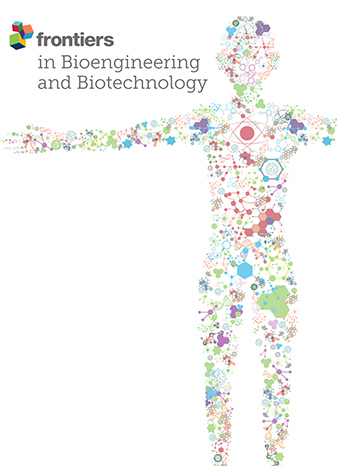DSEception:用于加强肺炎和肺结核诊断的无价神经网络架构
IF 4.3
3区 工程技术
Q1 BIOTECHNOLOGY & APPLIED MICROBIOLOGY
引用次数: 0
摘要
背景肺炎和肺结核是全球流行的肺部疾病,每种疾病都需要特定的护理措施。然而,由于对医生技能的高要求、成像位置和患者呼吸强度的影响以及相关的高医疗成本,区分这两种疾病带来了挑战,强调了对智能和高效诊断方法的迫切需求。方法本研究旨在开发一种针对各种肺部疾病(正常、肺炎和肺结核)的高精度自动诊断和分类方法。我们提出了一种混合模型,该模型基于 InceptionV3 架构,在 Inception 模块之后引入了 Deepwise Separable Convolution,并结合了挤压-激发机制。这一架构成功地使模型在不大幅增加参数数量和计算工作量的情况下提取出更丰富的特征,从而显著提高了预测和分类肺部疾病的性能。为了客观评估所提出的模型,我们进行了外部测试和五倍交叉验证。结果在外部测试阶段,我们的模型取得了 90.48% 的平均准确率(ACC)和 91.44% 的 F1 分数(F1),比表现最好的基线模型 ResNet 提高了约 4%。在五倍交叉验证中,我们模型的平均 ACC 和 F1 分别达到了 88.27% ± 2.76% 和 89.29% ± 2.69%,显示了卓越的预测性能和稳定性。结果表明,我们的模型有望部署到临床环境中,辅助诊断肺部疾病,从而降低误诊率和患者损失。 结论 利用深度学习自动辅助诊断肺炎和肺结核具有重要的临床意义,它可以提高诊断准确性、降低医疗成本、实现快速筛查和大规模检测,并促进个性化治疗方法的发展,从而有助于未来医疗服务的普及和改善。本文章由计算机程序翻译,如有差异,请以英文原文为准。
DSEception: a noval neural networks architecture for enhancing pneumonia and tuberculosis diagnosis
BackgroundPneumonia and tuberculosis are prevalent pulmonary diseases globally, each demanding specific care measures. However, distinguishing between these two conditions imposes challenges due to the high skill requirements for doctors, the impact of imaging positions and respiratory intensity of patients, and the associated high healthcare costs, emphasizing the imperative need for intelligent and efficient diagnostic methods.MethodThis study aims to develop a highly accurate automatic diagnosis and classification method for various lung diseases (Normal, Pneumonia, and Tuberculosis). We propose a hybrid model, which is based on the InceptionV3 architecture, enhanced by introducing Deepwise Separable Convolution after the Inception modules and incorporating the Squeeze-and-Excitation mechanism. This architecture successfully enables the model to extract richer features without significantly increasing the parameter count and computational workload, thereby markedly improving the performance in predicting and classifying lung diseases. To objectively assess the proposed model, external testing and five-fold cross-validation were conducted. Additionally, widely used baseline models in the scholarly community were constructed for comparison.ResultIn the external testing phase, the our model achieved an average accuracy (ACC) of 90.48% and an F1-score (F1) of 91.44%, which is an approximate 4% improvement over the best-performing baseline model, ResNet. In the five-fold cross-validation, our model’s average ACC and F1 reached 88.27% ± 2.76% and 89.29% ± 2.69%, respectively, demonstrating exceptional predictive performance and stability. The results indicate that our model holds promise for deployment in clinical settings to assist in the diagnosis of lung diseases, potentially reducing misdiagnosis rates and patient losses.ConclusionUtilizing deep learning for automatic assistance in the diagnosis of pneumonia and tuberculosis holds clinical significance by enhancing diagnostic accuracy, reducing healthcare costs, enabling rapid screening and large-scale detection, and facilitating personalized treatment approaches, thereby contributing to widespread accessibility and improved healthcare services in the future.
求助全文
通过发布文献求助,成功后即可免费获取论文全文。
去求助
来源期刊

Frontiers in Bioengineering and Biotechnology
Chemical Engineering-Bioengineering
CiteScore
8.30
自引率
5.30%
发文量
2270
审稿时长
12 weeks
期刊介绍:
The translation of new discoveries in medicine to clinical routine has never been easy. During the second half of the last century, thanks to the progress in chemistry, biochemistry and pharmacology, we have seen the development and the application of a large number of drugs and devices aimed at the treatment of symptoms, blocking unwanted pathways and, in the case of infectious diseases, fighting the micro-organisms responsible. However, we are facing, today, a dramatic change in the therapeutic approach to pathologies and diseases. Indeed, the challenge of the present and the next decade is to fully restore the physiological status of the diseased organism and to completely regenerate tissue and organs when they are so seriously affected that treatments cannot be limited to the repression of symptoms or to the repair of damage. This is being made possible thanks to the major developments made in basic cell and molecular biology, including stem cell science, growth factor delivery, gene isolation and transfection, the advances in bioengineering and nanotechnology, including development of new biomaterials, biofabrication technologies and use of bioreactors, and the big improvements in diagnostic tools and imaging of cells, tissues and organs.
In today`s world, an enhancement of communication between multidisciplinary experts, together with the promotion of joint projects and close collaborations among scientists, engineers, industry people, regulatory agencies and physicians are absolute requirements for the success of any attempt to develop and clinically apply a new biological therapy or an innovative device involving the collective use of biomaterials, cells and/or bioactive molecules. “Frontiers in Bioengineering and Biotechnology” aspires to be a forum for all people involved in the process by bridging the gap too often existing between a discovery in the basic sciences and its clinical application.
 求助内容:
求助内容: 应助结果提醒方式:
应助结果提醒方式:


